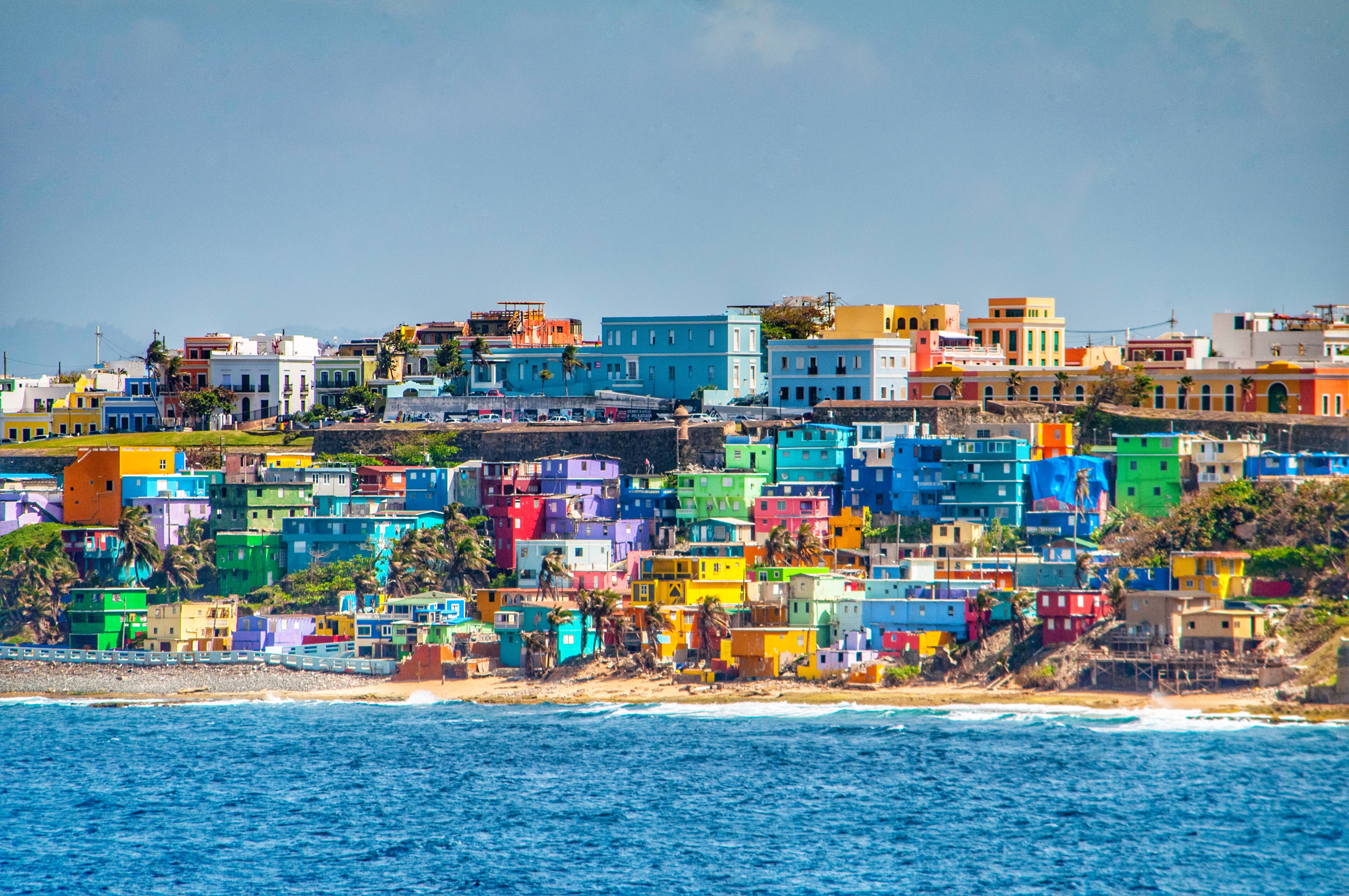Puerto Rican Geography and Environment: Puerto Rico

Puerto Rico, an archipelago in the Caribbean Sea, is a beautiful and diverse island with a rich history and culture. It is located approximately 1,000 miles southeast of Miami, Florida, and 1,400 miles east of the Dominican Republic. The island is about 110 miles long and 35 miles wide, with a total area of approximately 3,425 square miles. Puerto Rico is part of the Greater Antilles archipelago, which also includes Cuba, Jamaica, and Hispaniola.
Topography, Puerto rico
Puerto Rico is a mountainous island with a central mountain range that runs from east to west. The highest point on the island is Cerro de Punta, which stands at 4,390 feet above sea level. The island also has several coastal plains, the largest of which is the Northern Coastal Plain. The coastline of Puerto Rico is approximately 580 miles long and is characterized by sandy beaches, coral reefs, and mangrove swamps.
Climate
Puerto Rico has a tropical climate with warm temperatures year-round. The average temperature on the island is 79 degrees Fahrenheit. The island is also subject to hurricanes, which can cause significant damage to infrastructure and property.
Natural Resources
Puerto Rico has a number of natural resources, including forests, minerals, and water. The island’s forests are home to a variety of plant and animal life, including the Puerto Rican parrot, which is an endangered species. Puerto Rico also has a number of mineral resources, including copper, gold, and silver. The island’s water resources are also important, as they provide drinking water for the population and irrigation for agriculture.
Environmental Challenges
Puerto Rico faces a number of environmental challenges, including deforestation, water pollution, and air pollution. Deforestation is a major problem on the island, as it can lead to soil erosion and loss of biodiversity. Water pollution is also a problem, as the island’s rivers and streams are often contaminated with sewage and industrial waste. Air pollution is also a problem, as the island’s cities are often congested with traffic.
Tourism
Tourism is an important part of Puerto Rico’s economy. The island’s beautiful beaches, coral reefs, and rainforests attract millions of tourists each year. Tourism also provides jobs for many Puerto Ricans and helps to support the island’s economy.
Puerto Rican Economy and Infrastructure

Puerto Rico’s economy is a complex and diverse mix of industries, including manufacturing, tourism, agriculture, and pharmaceuticals. The island’s infrastructure, including its transportation, energy, and communication systems, is generally well-developed, although it has been affected by natural disasters in recent years.
Major Industries
- Manufacturing: Puerto Rico is a major manufacturing hub, with a strong presence in the pharmaceutical, electronics, and apparel industries.
- Tourism: Tourism is a major economic driver for Puerto Rico, with over 5 million visitors annually.
- Agriculture: Agriculture is a significant industry in Puerto Rico, with major crops including sugarcane, coffee, and bananas.
- Pharmaceuticals: The pharmaceutical industry is a major employer in Puerto Rico, with several major pharmaceutical companies having manufacturing facilities on the island.
Challenges
- Economic inequality: Puerto Rico has a high level of economic inequality, with a significant gap between the rich and the poor.
- High unemployment: Puerto Rico has a high unemployment rate, which has been exacerbated by the COVID-19 pandemic.
- Public debt: Puerto Rico has a large public debt, which has been a major challenge for the island’s economy.
Infrastructure
Puerto Rico’s infrastructure is generally well-developed, with a modern transportation system, reliable energy supply, and advanced communication networks.
Transportation
- Airports: Puerto Rico has several major airports, including the Luis Muñoz Marín International Airport in San Juan.
- Seaports: Puerto Rico has several major seaports, including the Port of San Juan.
- Highways: Puerto Rico has a well-developed highway system, with over 1,000 miles of paved roads.
Energy
- Electricity: Puerto Rico’s electricity is generated primarily by fossil fuels, although there is a growing use of renewable energy sources.
- Water: Puerto Rico has a reliable water supply, with over 95% of the population having access to clean water.
Communication
- Telecommunications: Puerto Rico has a modern telecommunications system, with high-speed internet and mobile phone networks.
- Media: Puerto Rico has a diverse media landscape, with several major newspapers, television stations, and radio stations.
Impact of Natural Disasters
Puerto Rico has been affected by several major natural disasters in recent years, including hurricanes, earthquakes, and floods. These disasters have caused significant damage to the island’s infrastructure and economy.
In particular, Hurricane Maria in 2017 caused widespread damage to Puerto Rico’s infrastructure, including its transportation, energy, and communication systems. The hurricane also caused significant economic losses, with the island’s economy estimated to have contracted by over 10% in the aftermath of the storm.
Puerto Rico, a beautiful island in the Caribbean, has been facing the wrath of Hurricane Beryl. For the latest updates on the storm’s path and impact, visit hurricane beryl update. The island’s residents are urged to stay informed and take necessary precautions to ensure their safety.
Puerto Rico is a resilient community, and we hope for a swift recovery from this storm.
Puerto Rico, an enchanting island in the Caribbean, has weathered countless hurricanes over the centuries. To safeguard its people and infrastructure, the National Hurricane Center ( national hurricane center ) plays a pivotal role. This renowned organization provides timely forecasts, warnings, and advisories, empowering Puerto Ricans to prepare and respond effectively to these formidable storms, ensuring the safety and well-being of the island’s vibrant community.